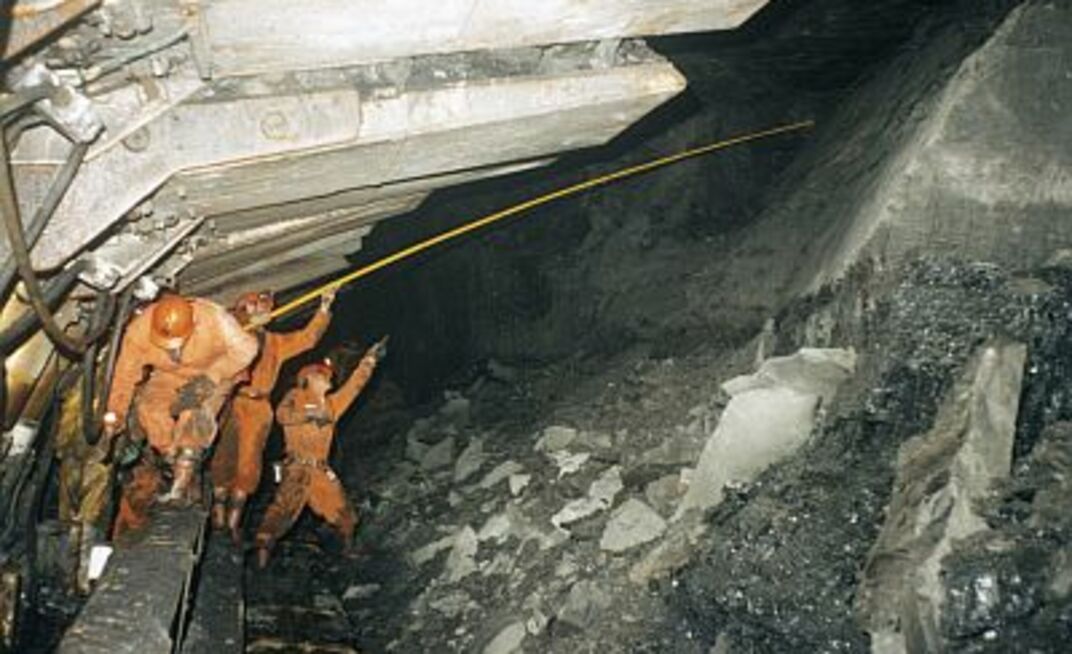Published in the May 2007 American Longwall Magazine
Anthony Iannacchione, T. Bajpayee and Leonard Prosser presented their findings during March at the SME annual meeting in Denver, Colorado. They outlined four fundamental steps to their assessment method: to recognize and rate defective roof conditions, to determine the probability, to evaluate miners’ exposure in the area and to rank the roof fall index for all active areas using a risk matrix.
“One of the most important safety issues at any site is the need to identify the location and nature of roof fall hazards,” the researchers said of the impetus for the studies. During a 10-year period between 1996 and 2005, 7738 injuries occurred in US underground coal, metal/non-metal and stone mines due to roof falls; coal mines had the highest incidence rate with 1.75 per 200,000 hours.
That rate has declined recently but 581 roof fall occurrences were still recorded in 2005, most of which were classified as severe. The number of fatalities during that same 10-year period was 100.
The process to not only analyze risk but implement a control measure is done via a series of steps. The roof conditions must first be recognized and then ranked from a low to high hazard. An analytical process is then completed to determine the probability of a fall, taking conditions of the area into account. Also identified is an estimation of time that miners are expected to occupy the area in question.
What results from miner exposure, conditions and the process is a ground fall risk assessment determination, according to Iannacchione.
“Combining the probability of roof falls with the estimations of miner exposure yields a suite of roof fall risk levels that is tied to changing roof conditions,” the researchers said. “Because risk can be ranked across the mine, risk management methods can be used to determine how to mitigate the risk.”
The techniques used to assess roof fall hazards are varied, but can generally be classified into three groups: hazards maps, rock mass classification systems (RMCS) and monitoring data.
Hazards maps, while accurate at determining hazards through mine geology, cannot determine a probability of occurrence. RMCS, which includes such techniques as Rock Mass Rating (RMR) and NIOSH’s Coal Mine Roof Rating System (CMRR), are used worldwide but typically require large amounts of data that cannot always be collected.
Monitoring data, historically used to establish trends that can aid in forecasting roof falls, is the only one of the three that has been used to assess risk, and the researchers said that even that has been on a limited basis. Large numbers of sensors are required to obtain complete coverage and an accurate mine-wide assessment.
Because of these limitations, NIOSH established the Roof Fall Risk Index (RFRI), which concentrates on defects’ intensity and character while incorporating features of other assessment techniques. What is measured with RFRI can be triggered by a broad range of factors, and those were measured in an underground stone mine study that then were classified into 10 categories.
Known as defect categories, each was allocated a value from one to five, with the highest being the most severe. From that point, an RFRI is determined by taking the assessment value for each defect category and multiplying it by an assigned weight of one or two, adding all category values together and then multiplying that by 1.11.
“Ideally, values approaching 0 represent safer roof conditions, while an RFRI approaching 100 represents a serious roof fall hazard,” said the researchers.
























